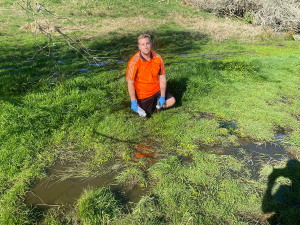To set up a dairy cow for a long, productive life you must give her the best possible start, says DairyNZ.
Extra effort now will pay dividends all her milking life. Heifers that reach target weights make successful milking cows and growing them well starts from the day they are born.
All calves, including bobbies, must have adequate fresh colostrum within their first 24 hours and should be fed colostrum, or a colostrum substitute, for at least their first four days.
Always handle calves gently and with care. Do not allow anyone to throw, hit or drag a calf at any time. Do not use electric prodders.
Calves seperated from their mothers must be sheltered to stay warm and dry.
Calf pens must be fit for purpose and well maintained. Bedding areas must be comfortable, clean and dry, with adequate ventilation but draft-free at calf level. Exposed concrete, bare earth and mud are not acceptable.
Calves should be fed at the same times each day to minimise stress; ensure their access to plenty of fresh water.
Feed calves adequate quantities of good quality feed to rapidly achieve weaning weight with a well-developed rumen.
A calf should drink at least 2L of fresh colostrum during the first six hours of life to get protective antibodies. To achieve this, pick up calves twice a day and give them gold colostrum.
Gold colostrum is valuable even if it contains blood or clotty mastitis milk. It is best fed fresh but may be frozen for up to six months. Thaw/heat in warm water; do not microwave.
Test the level of antibodies in a batch of colostrum using a Brix refractometer, available from a vet, farm supply store or a home brew shop.
Brix higher than 22% is best for newborns.
Store colostrum in several drums (to reduce risk of loss), in a cool place and out of direct sunlight. Stir twice a day.
A colostrum keeper or yoghurt starter, available from supermarkets, can be added to each drum to preserve it. Alternatively, preserve colostrum with potassium sorbate.
Good hygiene, health practices
- Scrub all feeding equipment well with hot water and detergent
- Remove sick calves promptly to a designated sick pen
- Frequently clean and disinfect pens where sick calves are treated
- Disinfect hard surfaces
- Ensure bedding is regularly refreshed
- Control the spread of disease by minimising movement between pens. Calves of the same age should stay in the same pen. However, small or unthrifty calves may be better off with a healthy younger group.
- Vaccinate, treat for parasites and provide access to shelter.
Diseases that people can contract from handling dairy animals in New Zealand include Leptospirosis, Cryptosporidiosis, Campylobacter, Salmonellosis and Ringworm. To keep humans and animals healthy, it is important to maintain high cleanliness and hygiene standards and vaccinate your herd where possible with advice from your veterinarian.


















